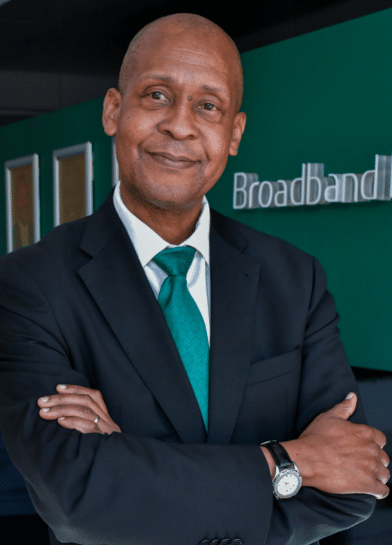Great network infrastructure, sound financial support and meaningful partnerships are key to unlocking potential growth for the Southern African Development Community (SADC).
Chief Executive Officer for Broadband Infraco, Andrew Matseke, says South Africa, which currently acts as the gateway for international connectivity for the continent’s landlocked neighbouring countries, has seen the submarine fibre cables market explode in the last 10 years. BBI is an anchor tenant and has made immense investment on the WACS cable.
In fact, Matseke explains that there are many cables that land in South Africa and the telcos from neighbouring countries, including the landlocked countries, are consortium members in one or the other of those cables. He goes on to say that Broadband Infraco offers a transition from the landlocked countries, through the Terraco data centre, then from there to any of the undersea cables.
“Our role, as South Africa, and our role as Broadband Infraco, is to help enhance competition in that market with an intention of reducing the cost of telecommunication. That way a country like Zimbabwe can go from Beitbridge into South Africa through a number of market players, and not just the legacy operators. This is the current model, and it fits into our current strategy by aligning with our vision to offer just under a 100 GB line from the border, to the data centre, to a submarine cable by through expanded IP services.
“As Infraco, we see a lot of potential within the market, because we believe that the rest of SADC is tired of the incumbents that currently play in this space. They love our pricing, the engaged and personal service, they also love the relationships we bring to them and we’ve seen a massive growth in SADC to date,” says Matseke. Broadband Infraco also plays a significant role at SATA (Southern African Telecommunication Association), where SADC Telecommunication Operators interchange on developments as well as innovation in the Region.
Currently, Infraco connects the borders of Namibia, Botswana, Zimbabwe, Mozambique, Swaziland, Lesotho and all seven of the neighbouring countries, and this is what Matseke believes could result in massive growth, as there are people knocking on their door, looking for connectivity. Broadband Infraco is currently intensifying its Johannesburg to Botswana route through the North West, bringing extended capacity to the Platinum belt route. This brings hope to connecting the Mining Belt as well as the North West to their neighbouring counterparts.
“We’re looking at really growing the SADC basket, purely from a view of demand. Because people have grown used to a specific selection and they don’t realise that there’s a BBI that does the same thing at a very cost – effective price. We’re really looking at investing and growing in SADC,” he says.
Matseke shares that the other aspect to help enable SADC’s potential growth is core investment in infrastructure in the neighbouring countries. In this regard, Matseke says SADC is already discussing a project that is called the SADC super highway, which is a fibre super highway, created through the joint investment of SADC countries. Government is looking to assign Infraco as the entity that assists in the development of this highway.
“The ultimate outcome of this initiative is that at least at an infrastructure level, we can ensure that the reach of optical fibre, which is what you need for backhauling high volumes of data, reaches South Africa, but also large parts of our neighbouring countries. That’s just touching on the infrastructure and connectivity levels,” he explains.
Last, but not least, Matseke says cooperation and partnerships around the sort of solutions that deliver the Fourth Industrial Revolution (4IR) is important.
In this regard, he says Infraco has an opportunity, being deeply rooted in biggest economy within the region, to help ensure that these players that provide 4IR solutions become active in neighbouring countries and partner with organisations that operate within those countries. That is already happening.
“The beauty of the Fourth Industrial Revolution is that the types of solutions that are being developed and are required are not capital intensive. You need people who are technologically savvy, who have the skills and education that is needed and an innovative mind-set. I’m aware of an entity in Botswana that is working with a partner in South Africa, developing Fourth Industrial Revolution solutions for the agriculture sector.
“There we need to foster these kinds of partnerships and even maybe even offer financial support from our government and other SADC countries,” he adds.


